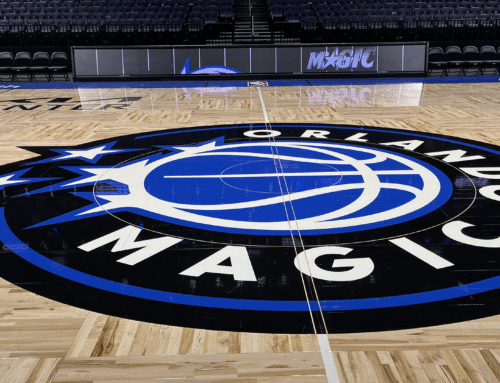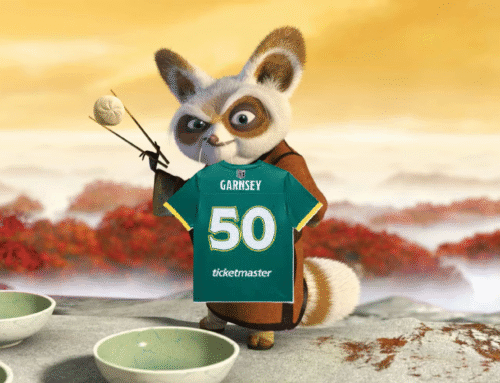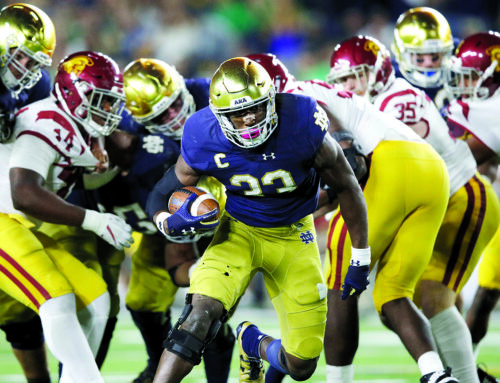Since the recent Clemson announcement regarding the positive tests for anabolic agents by three of its players, there has been abundant wailing and gnashing of teeth, along with the usual twitter array of conspiracy theories and complaints of NCAA overreach. Hair creams and tainted float tanks have been blamed in feeble attempts to excuse the results. Star defensive tackle Dexter Lawrence, as well as tight end Braden Galloway and Zach Giella, tested positive for the banned anabolic agent ostarine. The three will be ineligible to play in the Cotton Bowl subject to confirmation testing of a B sample.
The rules are unambiguous
The NCAA bans anabolic agents, and ostarine specifically, as performance enhancing drugs. The NCAA makes careful note that ostarine is not legal anywhere, and the USADA and WADA further note that it has no legitimate therapeutic uses. Simply stated, there is no reason why any athlete, or any person, should knowingly ingest ostarine or a product claiming similarities to it. Any athlete with any amount of this substance in their system is ineligible for intercollegiate competition.
Regarding so-called “accidental” contact with a banned substance like ostarine, the NCAA places the burden entirely on the athlete to know what is in any supplement the athlete may ingest. It is made clear to all athletes in every sport that there is no approved list of supplements, and athletes are strongly encourage to exercise extreme caution with dietary supplements specifically. The NCAA warns athletes that dietary supplements are not well regulated, that there is a history of malfeasance in the industry, and that they are therefore required to review any supplement they desire to use with the designated member of the athletics department staff. Again, the rules make clear that athletes are in control of what they consume and use, and they are entirely responsible for the outcome of any testing as such.
NCAA protocols specify that bowl games are within the purview of the NCAA Drug Testing Policy and mandate that the athletic director of a player’s institution will be notified of a positive test. The notice further advises that the B sample will be tested. The institution is charged with notify the player immediately and securing the player’s preference for who he will have as his observer to the testing of the B sample. The B sample will then be tested by a WADA certified facility and its results shall be final.
The protocol states “[u]pon notification of the sample B positive finding, the institution shall be required to declare the student-athlete ineligible, and the institution will be obligated to withhold the student-athlete from all intercollegiate competition.” There is an appeal process, however, the timely nature of the procedure effectively excludes an athlete from participation in a bowl game in all circumstances.
Save the complaints, Clemson will be just fine
As of this writing, the results of the B sample have not been made public. While it would be unusual for a B sample test to contradict the original test (the test is of the same urine sample), it does happen from time to time. Floyd Landis and Marion Jones were both saved from suspension briefly, rescued by the B sample. In this sense Notre Dame center Sam Mustipher is right to be cynical in stating he’ll believe all this when Lawrence isn’t actually on the field.
But please save the complaining for something else. Clemson will not be playing with 10 men on defense. Albert Huggins (4* 315 lbs) and Nyles Pinckney (4* 300 lbs) make a formidable rotation at defensive tackle in Lawrence’s absence. Most teams would consider themselves blessed to have those two anchoring the line.
As for complaints about the NCAA and its testing protocols, most fans should be more than aware by now that these standards are the international norm across all sports. The WADA and USADA have made this their protocol for decades, and professional sports and the NCAA, while not signatories to the USADA mandate, nonetheless have adopted its protocol and have observed its prohibitions for many years. “I didn’t know” hasn’t been a valid excuse in quite a while.





While there may not be a hole behind Lawrence on the depth chart. I feel a lot more confident our OLINE can handle his apparently very solid backups than a first round NFL draft pick.
Nice information. In doing some quick online research I saw the half-life for ostarine is 24 hours. Could some more players have been possibly given substances 24-48 hours prior to testing and cleared, and some of these on a latter cycle got dinged for “traces” if their metabolism didn’t clear it in time? I’m no scientist, it’s just curious to me that a 340 pound DT, an o-lineman and TE tested hot. Those are some big boys that might not have cycled through quite in time relative to others, which I found odd that it wasn’t one rogue player. It wasn’t even just a starter or backup, it’s a pretty comprehensive set of three different players in three different position groups on both sides of that ball that tripped on it.
That’s pretty cynical of me to suggest, but the news makes the mind wander as to just what might have been going on in a broader view if there actually was something shady happening. As the article kind of suggests with references to other sports, usually athletes that fail tests fail them for a reason…(Of course, maybe there is some innocent and benign explanation of a contamination or something that would invalidate it all, I just tend not to give it credence at this point).
To be clear, I don’t think there’s some vast conspiracy that the whole program is in on, but it would only take a trainer or manager or staff member or two and that gives plausible deniability for the rest of the program to not know or have even condoned. Surely on talent alone Clemson doesn’t need a pharmaceutical edge. And if the Tigers beat Notre Dame I won’t entertain for a second it was because of cheating.
And it stinks for the players – who by all accounts across all programs simply trust what they’re given since the banned lists are lengthy and not anything anyone can reasonably expect to keep track of, barring the obvious. For that, I’m not naive enough to believe Clemson’s FB program would be alone in that regard by any means. Probably could have happened to any team at any time.
The most likely “innocent” explanation is players using unscreened supplements. Do I think there was likely an intentional ingestion of ostrazine? My sincere hope is that there wasn’t. Having said this, NCAA cannot make its warnings against unscreened supplements and the consequences more clear. NCAA follows WADA’s lead:. They don’t care how it got there, it’s the players responsibility to make sure it doesn’t. In the context of the many international doping scandals, they have simply dispensed with ingnorance or accident as a defense. If Clemson should have a beef, it’s with the 100s of cyclists, runners, etc. who claimed they did not know when they tested positive.
Well put, obviously I’m just conjecturing. Having the 3 players from 3 different positions and 3 backgrounds pop raises my eyebrows. What are the odds that the players all just happened to use a similar unscreened substance when they really don’t have too much in common? It may be the players’ responsibility but they have a lot in the hands of the staff, especially since I’m guessing the culture in D1 sports isn’t to refuse what you’re given as an athlete. Whether it’s intentional or not, it also seems odd to me that 3 tested positive. Just makes me wonder what else may (or may not) be going on there.
Hooks, I agree, the randomness of it – 3 players in 3 different positions with very different backgrounds – suggests that it could be a supplement provided by staff and not something these three guys took on their own. It would seem strange that 3 fairly unconnected guys could have all taken then same tainted supplements that they each found independently somewhere. That smells a bit more like someone suggested it to them.
But, assuming the B sample tests positive, I just don’t think the label “innocent” can apply here. Let’s not confuse unknowing ingestion with innocence (not saying you are, but others seem to be). Certainly, it could have been an unknowing ingestion, meaning the Ostarine may not have been expressly listed on the label, but that doesn’t mean it wasn’t a known gamble when they took it. As I said in my comment on the other article, these banned substances don’t make it into run-of-the-mill supplements. You’re not buying creatine or whey protein or amino acids etc. in GNC and ending up with Ostarine in your urine. You have to be playing a playground with significantly more shade than that to accidentally wander into some Ostarine or Androstene or anything like it. Indeed, that’s exactly why the onus of not ending up with this sh1t in your body is put on the player/staff. Because any reasonably careful person can avoid an unknowing ingestion fairly easily.
My guess is that someone – staff or player – took a calculated risk on some supplement that was reported to be getting uncommon results in the gym. New products like that come to the market constantly. But we all know that things that seem too good to be true generally are, and its pretty common knowledge that the companies that make these kinds of products are always pushing the PED envelope (mostly because they’re marketing them to bodybuilders). So I find it hard to believe that these guys weren’t taking a known risk when they took whatever it is that they took.
Plausible deniability is a much different look than “innocent.”
[crinkling sound as he adjusts his tinfoil hat]
So, the more I read the weirder this gets: Here’s another D lineman from Clemson:
“(The nutrition staff) did everything possible that you really can do. There’s really nothing that they didn’t do,” he said. “That’s a very serious thing in our program obviously because of things like this. But it’s not just about the things that you eat as far as that – whatever they tested positive for.
“It goes back to the lotions that you put on your skin, your body can adjust to that. It goes back to the different hair products that you use. We’ve got this thing called a float tank. They’re investigating that because of the Epsom salt that’s in the float tank. We’re floating in it. It could be anything. Maybe just through smelling something, fragrance, whatever. So it’s really nothing that really anybody could have controlled, I feel like.”
Ok, first, “(The nutrition staff) did everything possible that you really can do. There’s really nothing that they didn’t do”? Um, (1) how would he know that (2) why would an innocent player (meaning, one who hadn’t tested positive) blindly defend the staff like that? That doesn’t add up. He has no reason to. He could just say “I know these three guys and they would never take PEDs” or something to that effect. This statement goes way beyond that, though. Why?
Second, the float tank. Really dude? Lotions that your body “adjusts” to? Fragrance? C’mon man. Where the hell is he getting this nonsense? And why is he sticking his neck out when he doesn’t have to?
This all sounds coached. Not in the conspiracy way. But in that it sounds like the university has gathered the players and rammed an “our nutrition staff tests every potato that comes through” narrative down their throats and pushed the falsehood that this could not have come through the staff and that Ostarine might be lurking in Epsom salt baths and Dolce & Gabbana.
And THAT, my friends, sounds like a program scrambling because it knows this is more than a rogue player(s) and it desperately needs everyone on message.
And the response to that asinine comment is this: THERE IS NO LEGITIMATE PRODUCT THAT CONTAINS OSTARINE. Anywhere, case closed, no reply necessary. You simply cannot just run into some lotion sitting on a shelf that has ostarine in it.
Especially HAIR GEL. I saw Lawrence was saying he thinks maybe it was in his hair gel.
This is simply false and has been proven by other athletes that have been caught with this stuff in their systems. Cross contamination occurs.
One such case:
Subsequent testing by two independent laboratories on both the bottle she had used on the day of her positive test and another sealed bottle from an entirely different batch and lot number proved that a salt tablet that Lauren had taken was contaminated and caused this positive test’, read a 3 February statement. ‘The World Triathlon Corporation, having recognized the salt tablet contamination, has agreed to significantly reduce her sanction to the minimum timeframe allowed’.
‘I never would have imagined that a salt tablet, an electrolyte replacement that endurance athletes routinely rely on while racing in hot and humid conditions, could be the root cause of all of this’, said Barnett in the same statement. Classified Nutrition has not commented on the lawsuit, but Neurolytes Capsules are no longer listed on its internet site. In April, the US Anti-Doping Agency (USADA) issued a warning confirming that Neurolytes was on its High Risk List. There are over 350 supplements on the HRL.
Cross contamination isn’t really a risk, as the levels involved wouldn’t be high enough to trigger the positive test. Intentional contamination is a risk, however. But it seems that either can be avoided with some fairly minimal diligence.
https://www.slowtwitch.com/Features/Anti-Doping/Are_Contaminated_Supplements_Really_Causing_AAFs__6214.html
“Ultimately, you have to have some faith in something, and I choose to place my faith in math and in due diligence. If you do a bit of research and avoid bottles that look like the cover a comic book, you’re way ahead. There’s no reason with the ease of conducting research on the internet and with the third party certifications available that any athlete should ever have an AAF from a contaminated supplement.”
Barnett was taking a salt supplement from a new company called “Classified Nutrition.” Hmmmmm. I wonder what part of the ingredients of their Neurolyte capsules they kept classified. Again, why fish for your supplements in “Classified Nutrition” waters? Why not go with a brand name, reputable company?
You are not the only one these days believing in alternative facts.
You are not the only one these days who doesn’t know what they are talking about
Know what I’m talking about? I’m just counting on The World Triatholon Corp. and others to know what they are talking about.
I get that cross contamination can occur, but what I don’t get is why they would have this drug anywhere close to a product that is being mass produced? Especially since this drug seems to be quite illegal. I understand they might have some for testing purposes or whatever but wouldn’t that be more in a controlled lab and not is a production area that could cause cross contamination? I work in the beer industry now and even on the production side we are super careful not to cross contaminate brews, and that is just for beer, not something like drugs. Just a thought that came across my brain
You and I need to get together to discuss brew sciency things
How many cases and recipes do we need to uhh… err… test? But seriously if I ever make it to a game and tailgating I will have enough beer for any and all who visit.
i heard (on reddit, so not sure if true) that they only tested 10-15 players. so we’ve potentially got 30% of the tested players coming back hot. pretty big goof if it’s a goof.
I would be shocked, SHOCKED, if between these four programs only 3 players had a sliver of PED in their system (and that includes ND). I would think PED use is pretty common in college football, it was in high school sports when i was that age, hell it was in college too and that was just for “weightlifting”.
I guess I can’t recall the last time college football players got suspended for PED usage, crazy it is the week of the CFP.
I’m glad someone picked up on the wink-wink gif.
Am I the only one who immediately assumed these guys just went a little heavy on the Fight Milk the week before testing?
You’ve gotta build up a relationship with the Crow Milk supplier
B test came back positive–they’re out Saturday